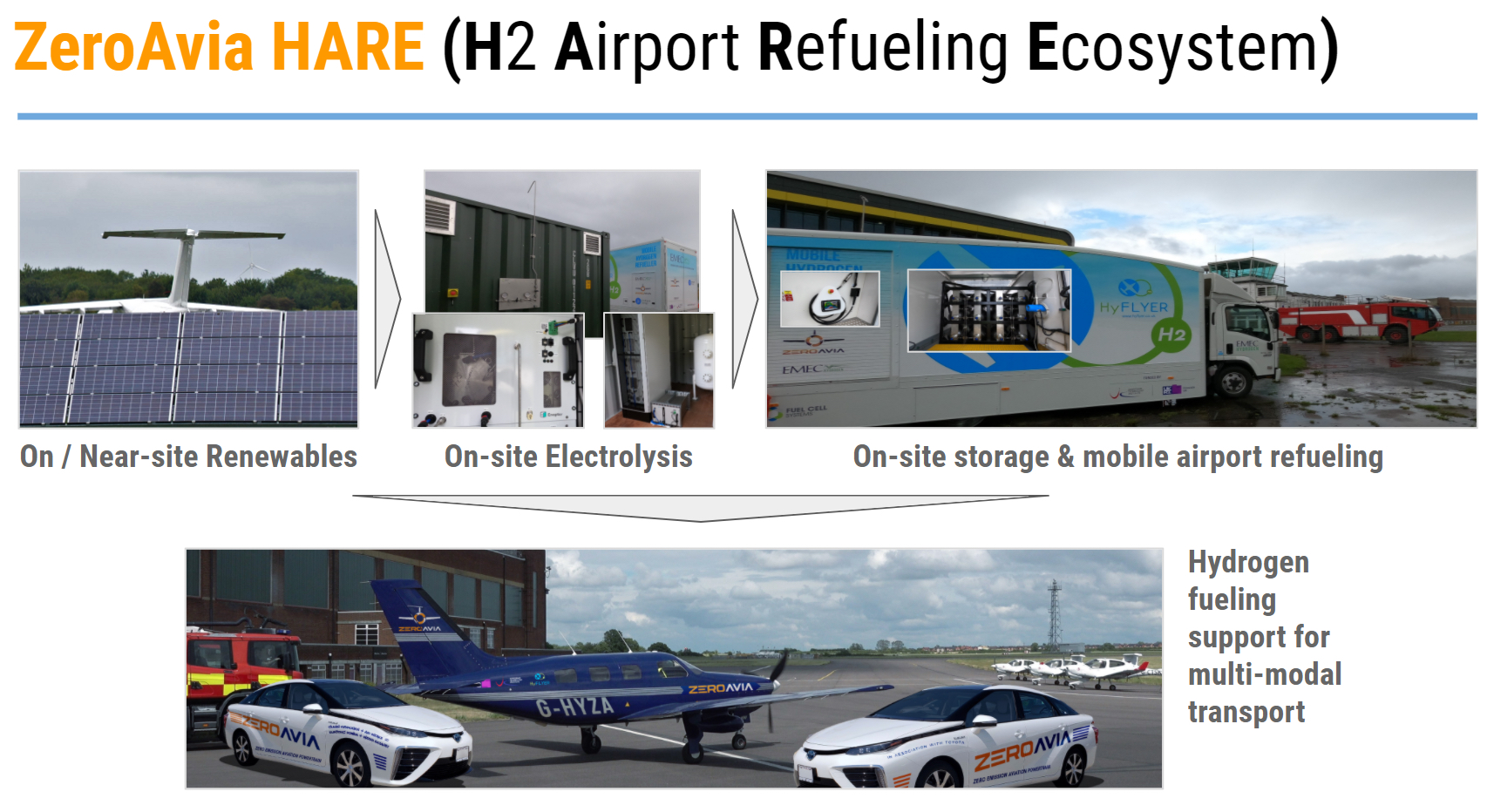ZeroAvia this week signed a memorandum of understanding with Nordic energy company Fortum to explore developing hydrogen production and refueling infrastructure at airports in the region. As part of the collaboration announced on March 20, ZeroAvia and Fortum will investigate the development of on-the-ground hydrogen infrastructure at relevant airports with the aim of removing emissions from flights and the wider airport “ecosystem.”
The partnership with Finland-based Fortum builds on other related alliances with other partners, including Shell in the Netherlands and with AGS Airports and Birmingham Airport in the UK. Fortum has operations in nine other European countries, as well as in Russia and India.
According to ZeroAvia, on-airport hydrogen infrastructure can also support complementary traffic from "heavy-duty" ground transportation, materials handling equipment, and other energy-consuming systems. The companies added that they will decide on possible investments “at a later stage.”
Fortum produces and delivers clean energy, working together with industries on their decarbonization as part of the transition to net zero emissions. Its core operations in Nordic countries also including Sweden and Norway consist of carbon dioxide-free power generation and the provision of a reliable supply of energy to private and business customers.
“As hydrogen hubs, airports can help reduce climate and air quality impacts of flight and a raft of other operations,” said Arnab Chatterjee, ZeroAvia’s vice president of infrastructure. “Scaling the renewable energy capacity and reducing costs pose clear, but fully surmountable, challenges to hydrogen as the fuel to power truly clean flights. Fortum is well positioned as a partner in this space, given the company’s clean energy focus and its emerging hydrogen leadership.”
ZeroAvia claims to lead the race to deliver zero-emission engine technology for passenger and cargo-carrying commercial aircraft. It expects certification of its engines first for nine- to 19-seat aircraft by 2025, followed by 40- to 80-seat aircraft by 2027. The company already has demonstrated its world-first Hydrogen Airport Refueling Ecosystem (HARE) at its research and development hub in Kemble in the UK and works with a range of airports on projects to establish the infrastructure and operations to operate zero-emission routes as early as 2025.
On March 13 the hydrogen-electric aircraft propulsion system developer says it has achieved record-breaking performance while testing the high-temperature proton exchange membrane (HTPEM) systems in its hydrogen fuel cells. According to ZeroAvia, early testing of the pressurized, 20-kilowatt HTPEM fuel cell stack at the company’s research and development facility in the UK demonstrated a specific power level of 2.5 kW/kg at the cell level, and the company expects to achieve power densities exceeding 3 kW/kg in the next two years. Its goal centers on making hydrogen fuel cells powerful enough to power large aircraft that seat more than 100 passengers, such as the Boeing 737 and Airbus A320 families, according to ZeroAvia.
In January, ZeroAvia successfully completed the first flight test of a 19-seat Dornier 228 regional airliner retrofitted with one of its hydrogen propulsion systems. After more than two years of collaboration with the hydrogen fuel cell systems developer HyPoint, ZeroAvia acquired that company in October 2022 with an eye toward integrating the turbo-air-cooled HTPEM fuel cells into its propulsion systems. ZeroAvia’s powertrain uses hydrogen fuel cells to generate electricity, which powers the electric motors that spin the aircraft’s propellers.
